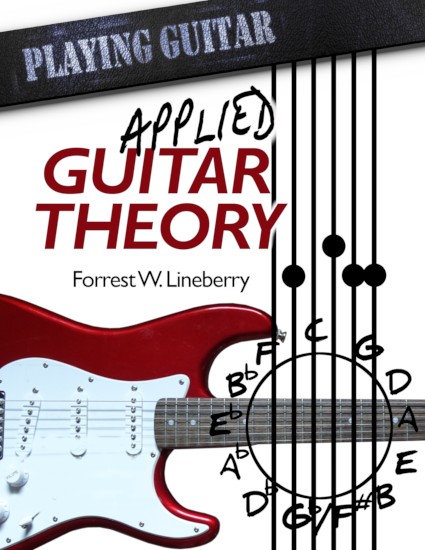Key Signatures Around the Circle
The circle of 5ths is a valuable tool that can help understanding many different aspects of how music works. We will come back to it again and again as we progress through these lessons.
One of the most valuable things that the circle can help us with is learning and memorizing key signatures.
Let’s go back to C and go around the circle in 5ths.. The C major scale how no sharps or flats:
C – D – E – F – G – A – B – C
The G major scale has one sharp:
G – A – B – C – D – E – F♯ – G
Notice that the sharp showed up as the 7th note of the scale.
To continue, the D major scale has two sharps:
D – E – F♯ – G – A – B – C♯ – D
Notice that we kept the F♯ from the G scale and once again the new sharp showed up on the 7t note of the scale..
This pattern will repeat as we move around the circle with 5ths:
- Each new scale starts on the 5th note of the previous scale
- The new scale keeps the sharps from the previous scale.
- The new scale will have one more sharp added to the 7th note of the scale.
Here are the remaining scales with sharps:
A – B – C♯ – D – E – F♯ – G♯ – A
E – F♯ – G♯ – A – B – C♯ – D♯ – E
B – C♯ – D♯ – E – F♯ – G♯ – A♯ – B
F♯ – G♯ – A♯ – B – C♯ – D♯ – E♯ – F♯
Again, notice that each successive scale keeps the sharps of the previous scale and adds one more sharp on the seventh note of the scale.
Fourths for Flats
We can line up the flat key signatures by going around the circle in 4ths.
The C major scale how no sharps or flats:
C – D – E – F – G – A – B – C
The F scale has one flat::
F – G – A – B♭ – C – D – E – F
Notice that the flat showed up on the 4th note of the scale.
The B♭ has two flats:
B♭ – C – D – E♭ – F – G – A – B♭
Again, notice that we keep the flat we already had and add a new one. With flats, the new flat shows up on the 4th of the scale
The pattern for moving around the circle in 4ths will be::
- Each new scale starts on the 4th note of the previous scale.
- The new scale keeps the flats of the previous scale.
- The new scale will have one more flat added to the 4th note of the scale.
Here are the remaining scales with flats:
E♭ – F – G – A♭ – B♭ – C – D – E♭
A♭ – B♭ – C – D♭ – E♭ – F – G – A♭
D♭ – E♭ – F – G♭ – A♭ – B♭ – C – D♭
G♭ – A♭ – B♭ – C♭ – D♭ – E♭ – F – G♭
Look at the pattern. Each successive scale has on more flat than the previous scale, and the new flat shows up on the 4th note of the scale.
Father Charles or Charles’ Father?
By using the circle, we can easily figure out how many sharps or flats are in each key signature. We can also use the circle to determine which notes are sharps and which notes are flats in each key signature.
To do that, we’ll list the notes of the circle starting with F and moving in 5ths to :
F – C – G – D – A – E – B
A handy mnemonic for memorizing this order of notes is Father Charles Goes Down And Ends Battle. There are more clever and humorous ways to make a mnemonic from these letters, but this one is the tried and true standard and is generally used because we can reverse the order of the words and it still makes a sentence.
Father Charles Goes Down And Ends Battle
Battle Ends And Down Goes Charles’ Father
Just like moving one way around the circle gives you sharps and moving the other way gives you flats, saying this sentence one way tells you which notes are sharp and saying the sentence the other way gives you flats.
Let’s try it out.
The G major scale has one sharp (Father).
The D scale has two sharps (Father Charles)
The A scale has three sharps (Father Charles Goes)
The E scale has four sharps (Father Charles Goes Down)
The B scale has five sharps (Father Charles Goes Down And)
The F♯ scale has six sharps (Father Charles Goes Down And Ends)
The C♯ scale has seven sharps (Father Charles Goes Down And Ends Battle)
Turn it around backwards for flats:
The F scale has one flat (Battle)
The B♭ scale has two flats (Battle Ends)
The E♭ scale has three flats (Battle Ends And)
The A♭ scale has four flats (Battle Ends And Down)
The D♭ scale has five flats (Battle Ends And Down Goes)
The G♭ scale has six flats (Battle Ends And Down Goes Charles’)
The C♭ scale has seven flats (Battle Ends And Down Goes Charles’ Father)
Refer back to the key signatures lesson, if you aren’t familiar with where the C♯ and C♭ come into the picture or how E♯ and F♭ names work.

Book Title
Applied Guitar Theory
A Comprehensive guide to applying music theory on the Guitar Fretboard.
Sell Link
Coming soon!
Sample Chapter Links

